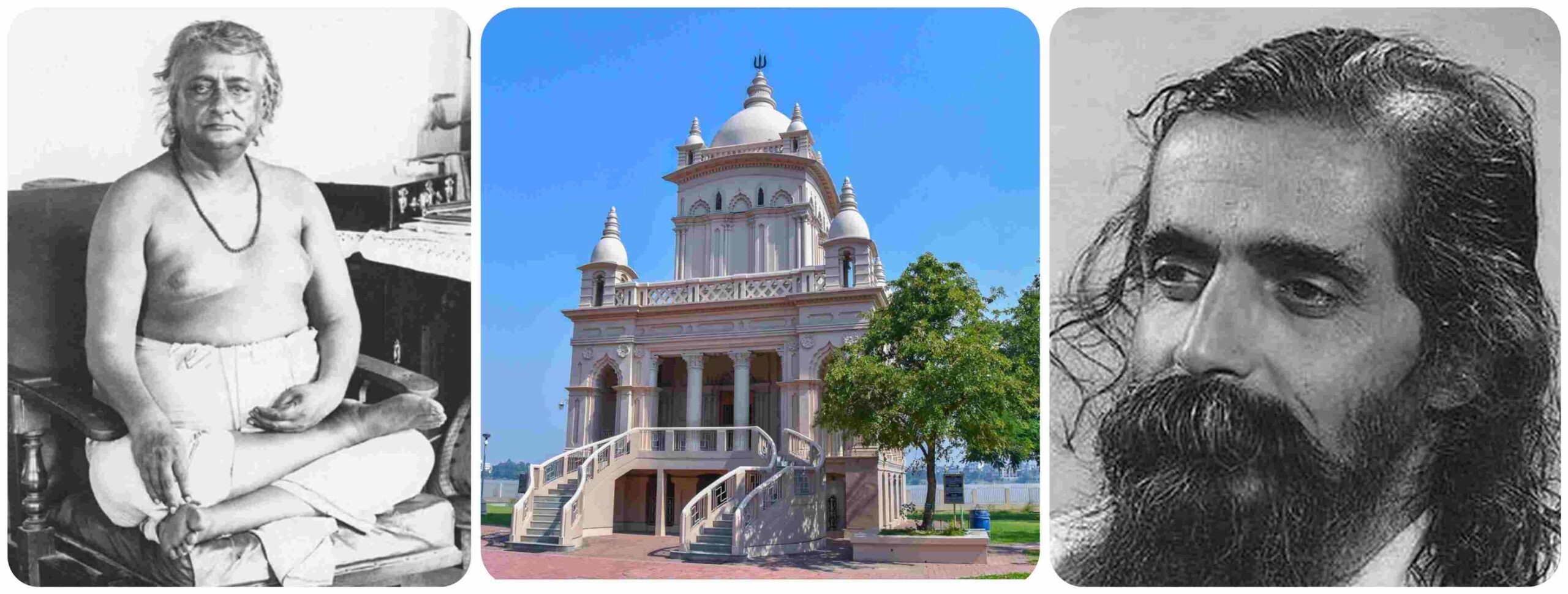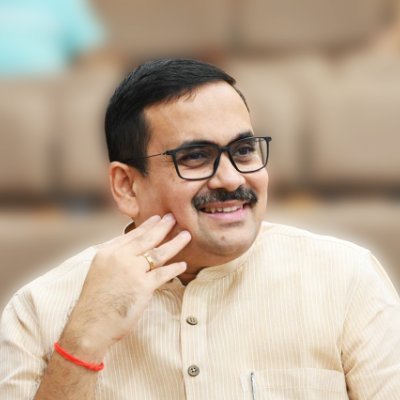Golwalkar’s initiation by Swami Akhandananda during Sri Ramakrishna’s centenary year marked a profound spiritual transformation, shaping his life of selfless service and devotion to higher ideals
1936, Sri Ramakrishna’s centenary year, was passing by with Golwalkar absorbing ‘drops of nectar of the wisdom of the Guru.’ On January 12, Swami Akhandananda told Golwalkar, ‘Tomorrow is your diksha. Observe fast today.’ The next day, January 13, writes Ranga Hari, ‘was the sacred day of Makara Sankranti, birthday of Swami Vivekananda and the first day of Uttarayan that spells well-being of human kind.’ At the sacred moment the Guru initiated the disciple.
For Golwalkar, that inflection moment, as he described it, ‘was the greatest day, a day to be written in golden letters, because, great fortune accrued through ages with countless births, had finally smiled on me and I was the recipient of an indescribable bliss from the kind hands of Gurudev. Experience of that day is literally most sacred. Words fail to describe that sense of sanctity. I can never forget those moments. The look in the eyes of Gurudev, his affection, his overpowering presence; the way he kindly bestowed upon me that luminous joy – I think and hope I will never forget all this. Every atom of my body was tremulous. I experienced a transformation. I was no more the person I was a few moments earlier.’
The last benediction was towards the end of January. Swami Akhandananda, his physical health deteriorating, called Golwalkar one day and said, ‘May you have the best of everything, may you achieveself-realisation. This is my only prayer to Guru Maharaj. I am passing on to you anything that may be good in me. May you be the recipient of any goodness that I may have and may all your poor qualities come unto me…Go now. This is my blessings to you. Remember this every evening, always. Go, may good things always happen to you. What better blessings can there be other than this?”’ ‘Was this a transfer of power at the spiritual plane? Who knows?’ asks Ranga Hari.
Many were such brief occasions in a short span of the last few days, when Golwalkar, post his initiation, would receive his mantras for life from the Guru’s mouth. In another interaction, for instance, Swami Akhandananda imparted what would perhaps become Golwalkar’s mantra for the whole of his rich, many-faceted and inspiring life of epic proportions. Swami Annadananda, in his Life of Akhandananda, has left us a description of that eventful evening:
‘From mid-December through January, the Swami had all the Ashrama devotees meet him after each evening service. One day he said: The association of sādhus is essential. You can’t live a spiritual life without it. And who is a sādhu? He who is absorbed in thoughts of God, who looks upon Him alone for support, is free from pride, is chaste and without any selfish idea, he is a sādhu. Nāham, Nāham; Tuhu, Tuhu, (Not I, not I; but Thou, Thou) Do we do anything? It is He that makes us do everything. It is His will. Truly, at every step of my life, I have realised it. Who can do anything without His will, His grace? Nāham, Nāham; Tuhu, Tuhu. These are the divine words uttered by our Master [Sri Ramakrishna]. If one repeats these words like a mantra, one will attain spiritual illumination.’
Ranga Hari, the quintessential raconteur, tells us how that ‘magnificent eight-word sentence’ etched an everlasting impression in the deep recesses of Golwalkar’s heart as he sat in those discourses, absorbing and internalising his Guru’s words and their revivifying power. Golwalkar was to embody this mantra for the rest of his life. Decades later when the editor of a leading weekly requested a number of eminent personalities of India, Shri Guruji among them, to ‘send him one sentence on what had guided their lives,’ he wrote out his. It was that same magnificent sentence, imparted to him years ago by his Guru, in a receding winter evening at the Sargachi Ashram, ‘Not me, only thou…’
Golwalkar’s initiation was complete just as Sri Ramakrishna’s centenary year and its celebrations were coming to an end. Swami Akhandananda’s health rapidly deteriorated, he was advised to be shifted to Calcutta. Golwalkar was asked to accompany him and nurse him throughout the journey. Swami Annadananda recounts that in the afternoon when Swami Akhandananda was carried to the railway station, ‘some peasants on the wayside, sad to see him being taken to the station said: “Baba, come back soon in good health.” The Swami smiled.
He had a clear premonition of his imminent end. A few days before he travelled to Kolkata, in course of an evening conversation, Akhandananda said, Swami Niramayananda’s records, ‘look, all those who work for the country infused with the strength of God, work for the welfare of the people – lok-kalyan – they work tirelessly, do not stop till their work is done. Once the work is done, they leave. Swamiji’s life is a burning example of this. See here [Sargachi], more than forty years have passed, do you not understand whose strength it is?’ About a week before his passing, while dictating his memoirs, Baba, told his young amanuensis, ‘Complete your evening worship and come here. My meditative reminiscences are being written through your hands – is it less than meditation and japa? Even this is His work.’ Keeping quiet for a few brief moments, he continued ruminatively, ‘In Jamnagar this life of service began, in Khetri it blossomed, in Murshidabad it ended.’
The train crossed Beldanga in Murshidabad and Nadia, Sri Chaitanya Mahaprabhu’s leela keshtra – Krishnanagar, Santipur, Ranaghat – reaching Sealdah late into the night. The route can still be traced, the railway tracks and the stations all standing along the same way. Anyone who has crisscrossed Nadia, knows that these stations and towns are steeped in Bengal’s religious lore and cultural history. All of them sanctified by the peregrinations of Sri Chaitanya Mahaprabhu and his disciples and followers, once ecstatically singing the Lord’s praise and heralding a new age awakening for India and for Sanatana Dharma. Swami Akhandananda swung in and out of consciousness during the journey, with Golwalkar making every effort to comfort him, serving him with lemon juice and gently stroking his head.
At Ranaghat, Annadananda writes, Akhandananda ‘came round and was given a little orange juice. After that, his eyes, always so full of love and sympathy, closed for ever.’ From the ‘Udbodhan’ office, to Belur Math, where he was shifted on the advice of the doctors, Golwalkar accompanied his ailing Guru until the last moments. In the afternoon of February 7, Golwalkar’s Guru, Sri Ramakrishna’s ‘Gangadhar’, Vivekananda’s ‘Ganges’, Akhandananda passed away. ‘His body was cremated on the bank’ of Ganga, ‘close to Swamiji’s temple in Belur Math.’
Amitabh Maharaj, Golwalkar’s lifelong spiritual companion and co-brother, who had seen him as ‘a spiral of fire’, took him around Calcutta to meet Sri Ramakrishna’s acquaintances including his other monastic disciples such as Swami Abhedananda. His encounter with Abhedananda was electrifying. We find a description of it in Suryanarayana Rao’s memoirs of Shri Guruji. Abhedananda presented Golwalkar with a photo of his and putting his signature on it said, ‘If my health is alright, I shall come to Nagpur once.’ And then looking at Golwalkar, he said, ‘You will lead your life just like a tyagi [renouncer].’ This was the volcanic Abhedananda’s blessings. Amitabh Maharaj also took Golwalkar to Vivekananda’s brother, the erstwhile revolutionary Bhupendra Nath Datta.
Golwalkar had now reached the other inflection point in his life. He resolved to join Belur Math. Amitabh Maharaj intervened, ‘You are not to live at the Ramakrishna Mission,’ he interjected, surprising Golwalkar, ‘Is it true? How do you know?’ Amitabh recounted one of his last conversations with the Guru in Sargachi. ‘Madhavrao has a great desire to go to the Himalayas,’ Amitabh had told their ailing Guru, once late into the night at Sargachi and the Master prognosed, ‘it seems he will work with Hedgewar in a spirit of selfless social service. He may certainly go to the Himalayas once for a while, but see that he doesn’t take to solitude.’ Golwalkar confessed that he too had been enjoined by the Guru to consult Amitabh whenever he had a difficulty. ‘So, what is your plan for me?’, Golwalkar pressed Amitabh, ‘I am going to take you back to where I had brought you from,’ he replied.
Having taken part in the concluding celebrations of Sri Ramakrishna’s centenary on February 13, six days after his Guru’s passing, Golwalkar returned to Sargachi, ‘paid silent respects with a heavy heart’ to his Guru’s seat, ‘picked up all his belongings from the storeroom’ and left for Nagpur, ‘carrying with him’, writes Ranga Hari, ‘the sacredness (punya) he had accumulated so far.’
Source:
https://www.millenniumpost.in/opinion/not-me-only-thou-588108
(The views expressed are the author's own and do not necessarily reflect the position of the organisation)


